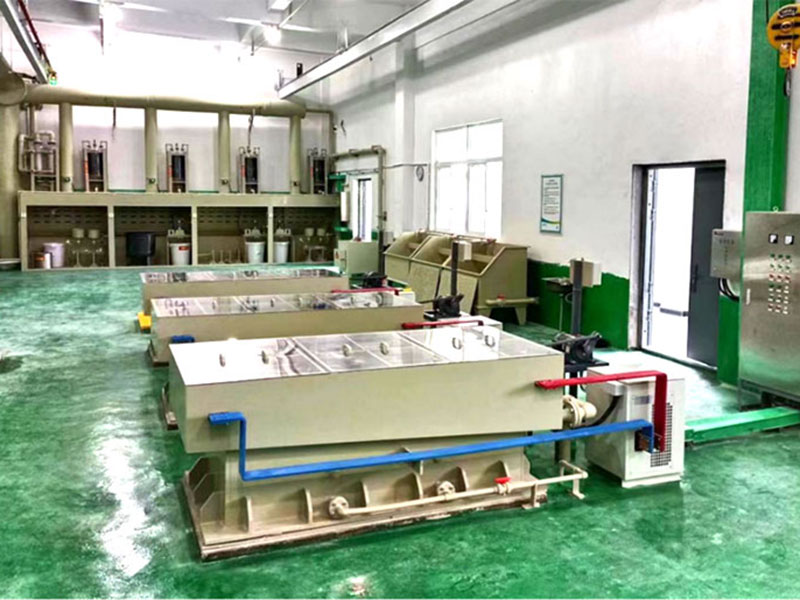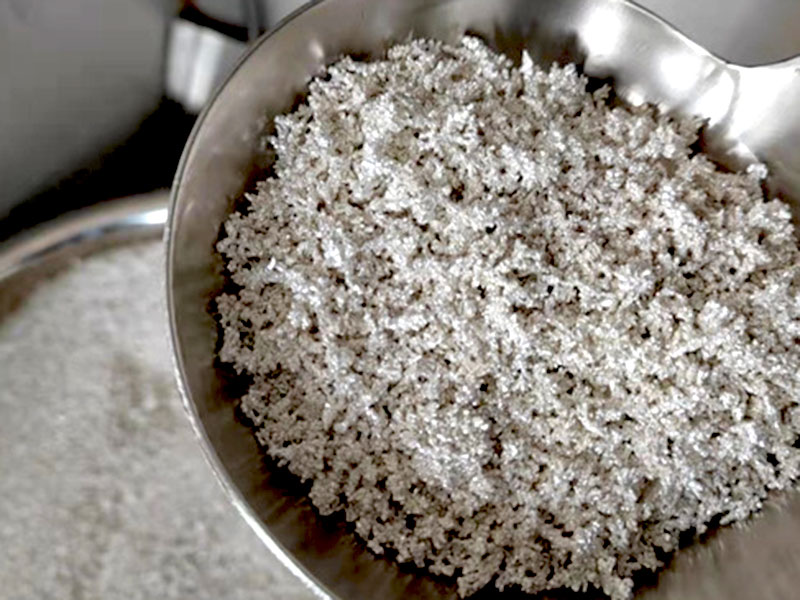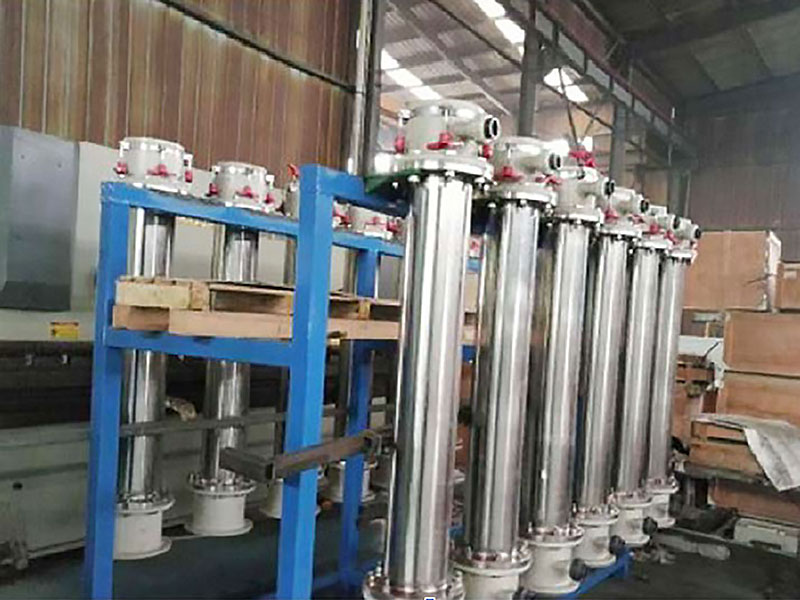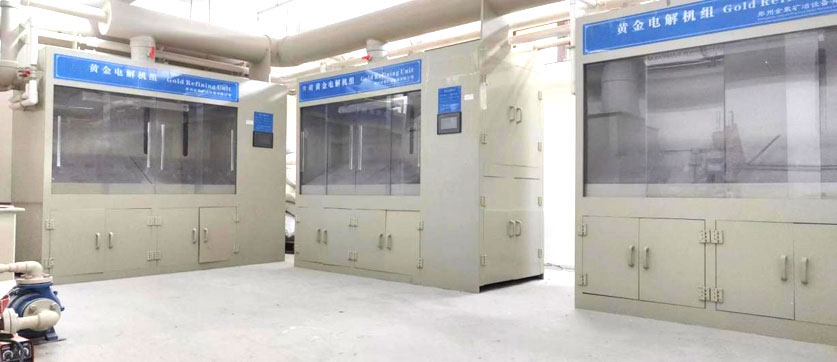Silver Electrolytic Equipment


The high current density silver electrolysis unit can meet the silver production of 20kg, 50kg, 100kg, 200kg, and 300kg per day for a single cell. In addition, there are models such as YDJ-W-50, YDJ-W-100, and YDJ-W-150 for high current density silver electrolysis without residual anode, high current density silver electrolysis boat-shaped cell, and order-based production. There are many types of silver electrolysis units. The selection of models needs to consider: the applicability of raw materials, production site conditions, employee operating habits, output, incoming material rules, etc.
The equipment composition of the low-discharge high current density silver electrolysis unit:
1) The electrolytic cell, including the electrolytic cell body, cathode plate, and conductive copper bar, is the main part of the whole set of silver electrolysis equipment. Compared with the ordinary silver electrolytic cell device using the upper exhaust method, the air volume is large, the air pressure is high, the energy consumption is high, and the space is arranged in a disorderly manner, our company’s silver electrolytic cell equipment is a side exhaust fully enclosed electrolytic cell.
2) Automatic stirring device, including stainless steel frame, crankshaft connecting rod, motor, scraper and scraper bracket, can hang the silver powder precipitated on the cathode plate, and can also play a certain stirring role on the electrolyte.
3) Side exhaust system, including the closing plate, exhaust pipe and acid mist condensation device on the electrolytic cell, can discharge the NOX waste gas generated during the electrolysis process out of the workshop, and recover the acid mist and some precious metals entrained in the waste gas.
4) Power distribution cabinet, which is a water-cooled power distribution cabinet and corrosion-resistant.
5) Refrigerator, providing cooling water for the electrolyte cooling system and acid mist condensation device.
6) Solid-liquid separation device (patent number: ZL202020211151.2): After the electrolysis is completed, when the bottom is discharged, through this device, the electrolyte can enter the circulation tank and the silver powder can be placed in the cleaning and drying machine.
7) Silver powder car, the silver powder after cleaning and drying is placed in the silver powder car and sent to the ingot casting area for ingot casting.
8) Circulation tank: used to circulate electrolyte during electrolysis, and there is an electrolyte cooling system in the circulation tank.
9) Cleaning and drying all-in-one machine (patent number: ZL202120618636.8): automatic cleaning and drying of electrolytic silver powder, reducing operation time and labor intensity.
Residual anode-free silver electrolysis equipment:
The appearance of the residual anode-free silver electrolysis equipment is the same as that of the conventional silver electrolysis equipment. The difference is that the anode area of the residual anode-free silver electrolysis is a titanium-plated iridium-tantalum anode frame, and the residual anode of the silver electrolysis can be directly placed in it for continued electrolysis without cleaning and casting.
The titanium basket is directly connected to the conductive copper busbar, and the current density of the residual anode-free silver electrolysis can reach 400-550A/m2.
Advantages of silver electrolysis equipment:
Our company’s silver electrolysis equipment has the following advantages:
(1) The production process is safe and stable:
The cathode and cathode plates and the conductive copper bars are connected and reinforced with stainless steel screws, and the copper bars are reinforced. The copper bars and the tank body are made of bakelite to prevent leakage. The titanium plate that contacts the cathode is made of titanium-clad copper and reinforced to the copper bar. This greatly enhances the conductivity and reduces the resistance, solving the problem of heating at the contact point. The U-shaped partition is added to the inner side of the tank body to solve the short circuit problem at both ends of the cathode plate, reduce production safety hazards, and also reduce the anode mud yield and production costs.
(2) Reduce pollution and improve the workshop working environment:
When using high current density silver electrolysis process for electrolysis, the electrolyte temperature is high, causing the electrolyte to volatilize and produce nitrogen oxides and nitric acid mist, resulting in poor workshop working conditions. Therefore, we designed a refrigeration system to cool the electrolyte and keep the electrolyte temperature at around 40°C. At this temperature, the electrolysis efficiency is guaranteed and the volatilization of the electrolyte is reduced. The ventilation on the top of the tank is changed to the ventilation on the side of the tank, and the upper part of the tank is sealed with a plastic plate. In this way, only a small amount of air is needed to extract the nitrogen oxide waste gas generated during the electrolysis process, saving energy and greatly improving the working environment.
(3) High electrolysis efficiency and good purity:
When the high current silver electrolysis process is used for electrolysis, the current density is above 750A/m², which is 2-3 times that of the conventional silver electrolysis process. The electrolysis time of the same quality of silver anode plates will be reduced by 60%, and the electrolysis is efficient. In order to avoid the concentration polarization phenomenon during high current density electrolysis, we designed a magnetic pump and changed the electrolyte circulation method at the same time, so that the electrolyte flow direction is parallel to the plate. The design of the electrolyte circulation method of magnetic pump + parallel flow solves the concentration polarization problem and ensures the quality of the electrolytic silver powder.
(4) Save manpower and easy to operate:
An automatic silver powder scraping device is used. The bakelite scraper is connected to the scraper bracket. The scraper is placed on the left and right sides of the cathode plate. The scraper bracket is connected to the stainless steel frame. It is connected by a crankshaft connecting rod and driven by a motor to automatically scrape off the silver powder precipitated from the cathode plate. A solid-liquid separation device is added to the lower end of the electrolytic cell. The electrolyte is first discharged from the bypass, and the washing water for the first washing of silver powder is also discharged from the bypass. The electrolytic silver powder is placed in the cleaning and drying integrated machine through the valve below the electrolytic cell. After cleaning and drying, it is placed in the silver powder car and directly sent to the ingot casting process. After the residual anode is taken out from the anode bag after electrolysis, it is directly placed in the anode titanium frame of the non-residual anode silver electrolysis to continue electrolysis without re-melting the anode.




